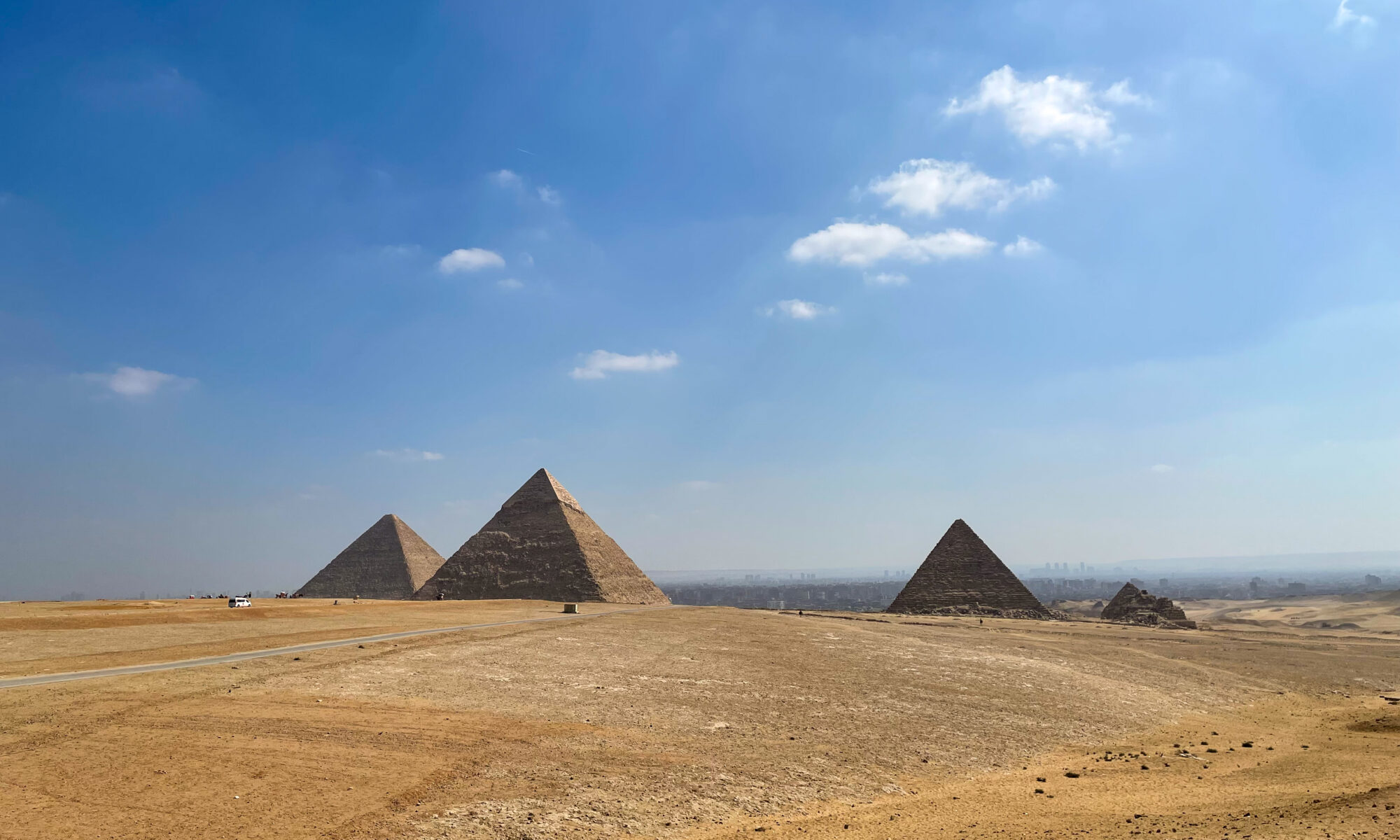When in Egypt, the first place you obviously want to go is to Giza to see the Great Pyramid of Khufu, but there is so much more to see. We took a day trip to three sites to see the pyramids of Lower Egypt.
We started our day to see the pyramids of Egypt at Giza and then made our way to Saqqara and Dahshur. The crowds at Giza and Saqqara were not too large, and we were alone at Dahshur, likely due to Covid. As a bucket list item, the pyramids of Egypt did not disappoint.
Step Pyramid of Saqqara
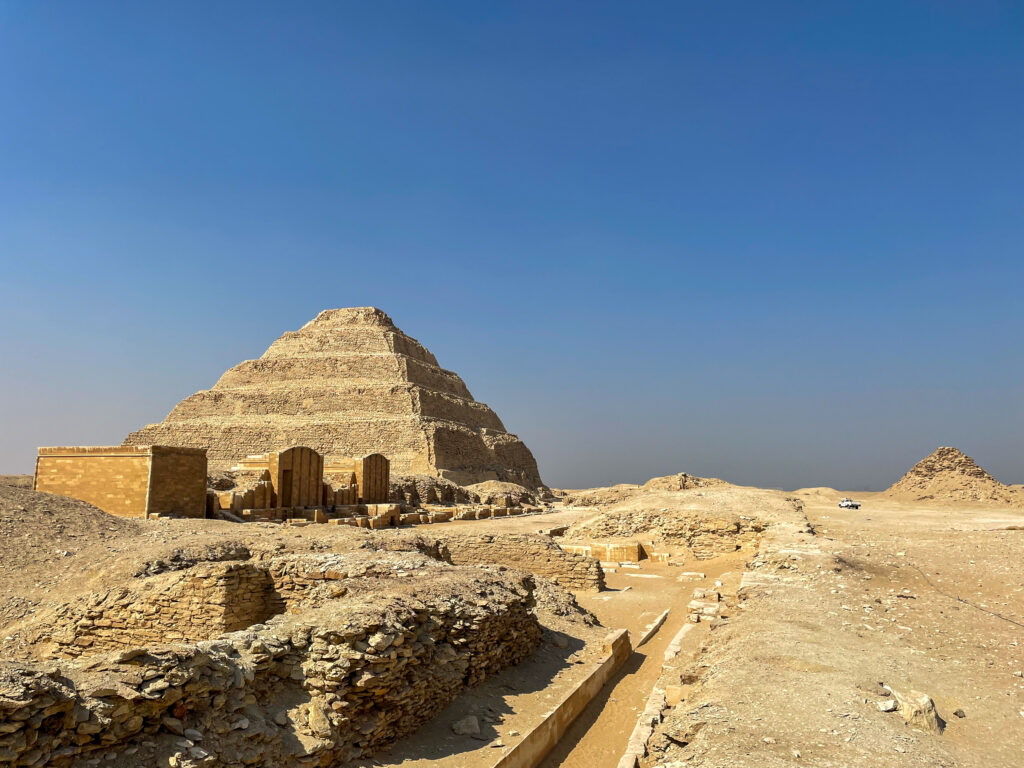
The Pyramid of Djoser, typically known as the Step Pyramid, is not just the first pyramid ever built (about 4700 years ago) but also believed to be the first monumental structure ever built using stone. Designed by Imhotep – who became deified by the Egyptians as the god of medicine. We went into the pyramid via the south court. In the center of the pyramid you can look down into the burial chamber.
When we were in Saqqara we also went into the Pyramid of Teti as well as the mastaba of Kagemni, both of which were the highlights of Saqqara. So, if you have time while in Saqqara, I would suggest visiting both.
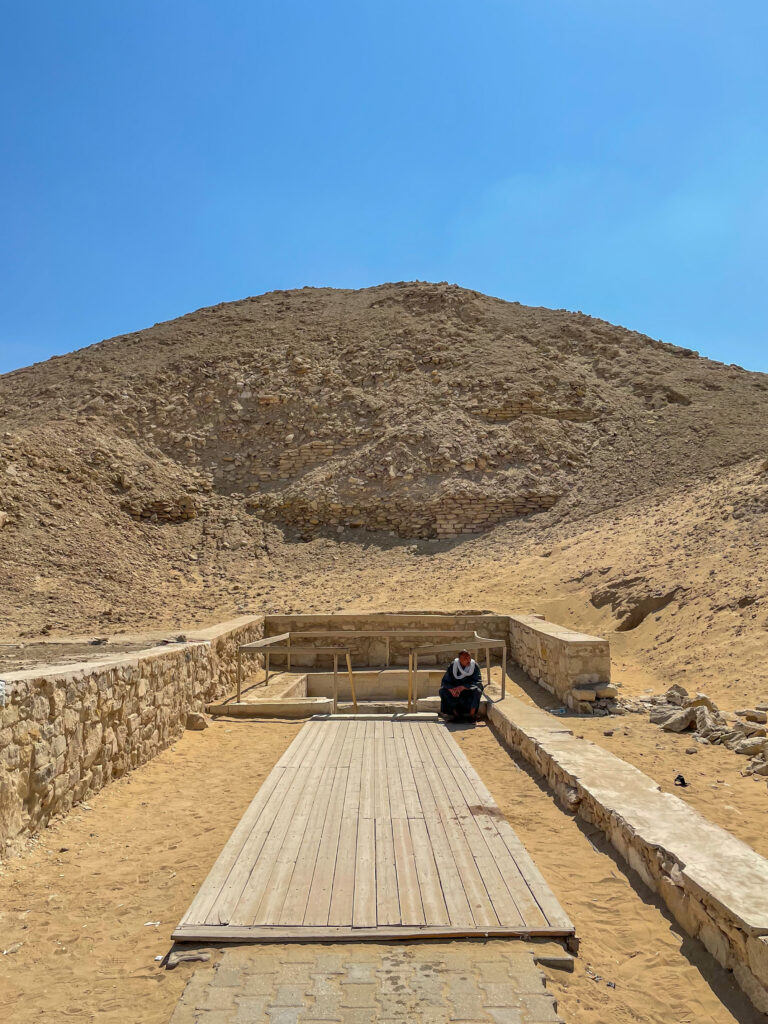
The Pyramid of Teti is a small, very accessible pyramid (much easier than say Khufu’s Pyramid), but what makes this pyramid special is the hieroglyphics inside. The inscriptions are some of the earliest examples of the pyramid texts. It is incredible to think that these inscriptions are from over 4200 years ago. Inside, everywhere you looked (including the ceiling – in Egypt, always look up!) there were hieroglyphic carvings.
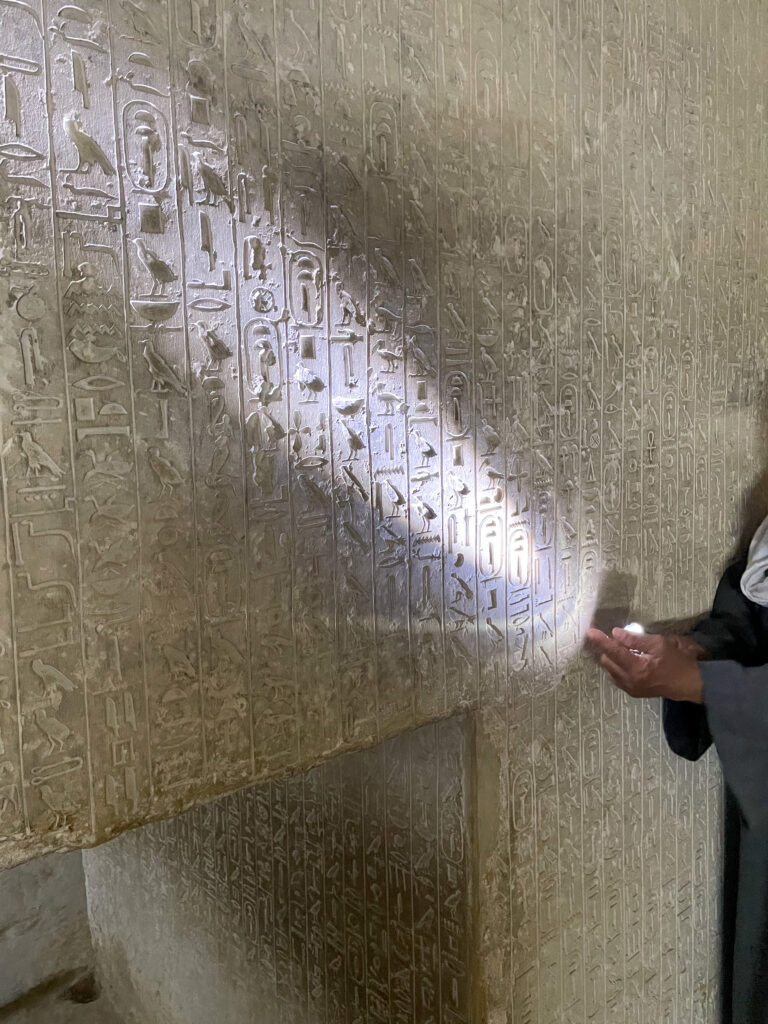
Just outside Teti’s Pyramid is the mastaba of Kagemni – the vizier of Teti. Inside the mastaba are a number of rooms with intricate carvings, many still with the original colors, detailing the life of Kagemni. The colors are not as vibrant as what you would see in the Valley of the Kings, but these are much older. Walking through this mastaba was absolutely incredible!
Bent Pyramid
The Bent Pyramid, built for Pharaoh Sneferu around 2600 BC, represents a transition from the step pyramids to the “smooth” pyramids. Also, the Bent Pyramid represents progress – the builders learned from the collapse of another pyramid and modified the plans halfway through. The slope of the Bent Pyramid changes from 54 degrees at its base, to 43 degrees – thus the “Bent” pyramid. One other unique aspect of the Bent Pyramid is that the limestone casing remains mostly intact, unlike any other pyramid in Egypt.
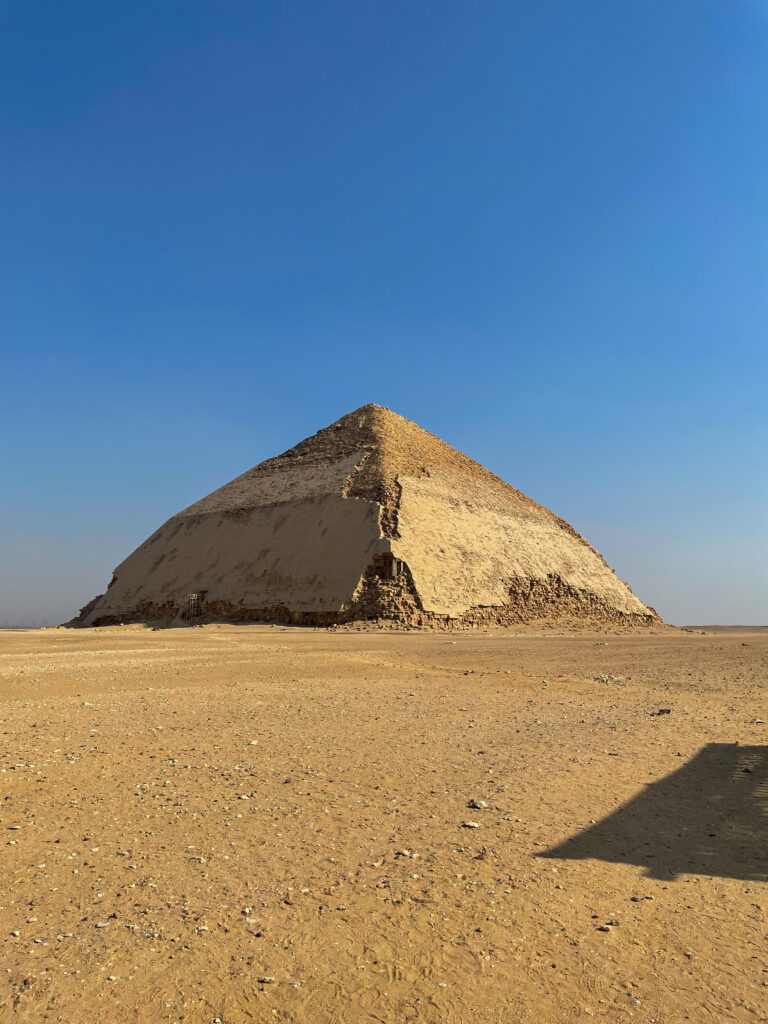
Red Pyramid
The Red Pyramid was the final funerary pyramid for Pharaoh Sneferu. At over 340 feet tall, the Red Pyramid is the third largest pyramid of Egypt and gets its name from the red hue of limestone used in construction. Taking what they learned from the Bent Pyramid, the Red Pyramid uses the same shallow inclination (43 degrees) of the upper half of the Bent Pyramid.
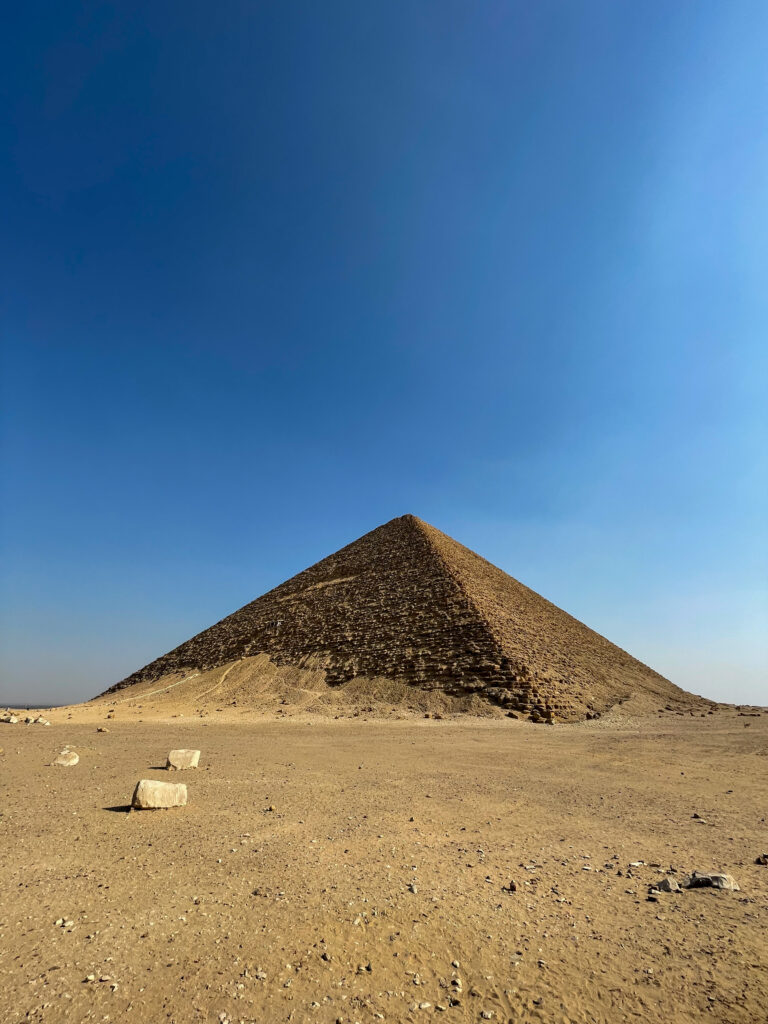
Great Pyramid of Khufu
The Great Pyramid of Khufu is impossible to put in context. Over 4500 years old. The tallest man-made structure for over 3800 years. Weighs over 6.5 million tons. Volume of 88 million cubic feet. The four sides are almost exactly equal in length – off by only an average of 58 millimeters. These numbers, impressive as they may be, are nothing compared to actually seeing it.
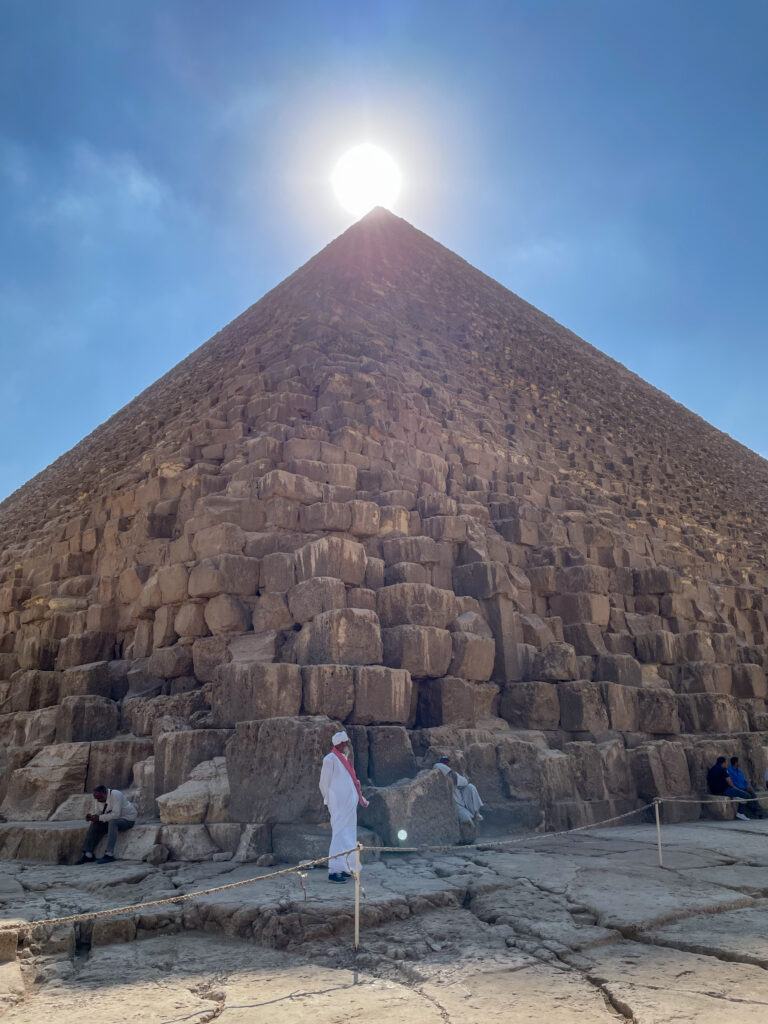
The Great Pyramid of Khufu stands as arguably the greatest monument ever built by man. Ironically, as great as the pyramid is, the only surviving depiction of the man it was built for, stands at only three-inches tall and is displayed at The Egyptian Museum.
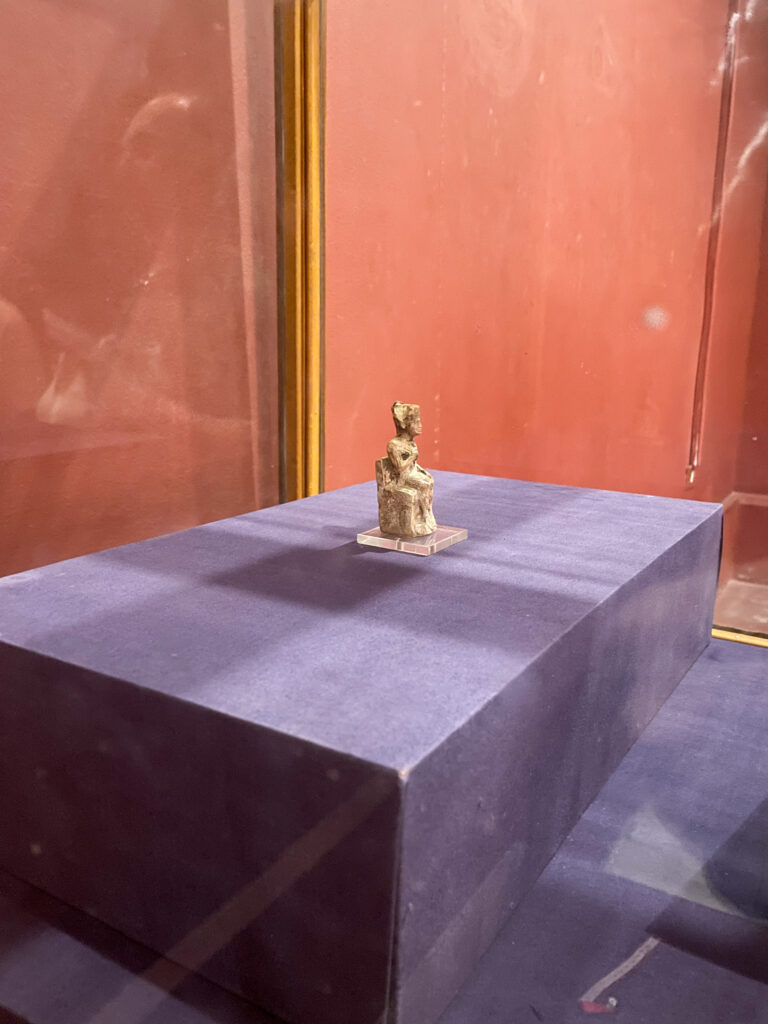
Going inside the Great Pyramid is not for those who have bad backs or are out of shape – which sadly we checked both boxes – however we survived! There isn’t much to see inside the pyramid, but it was still a worthwhile experience to do at least once to just be inside!
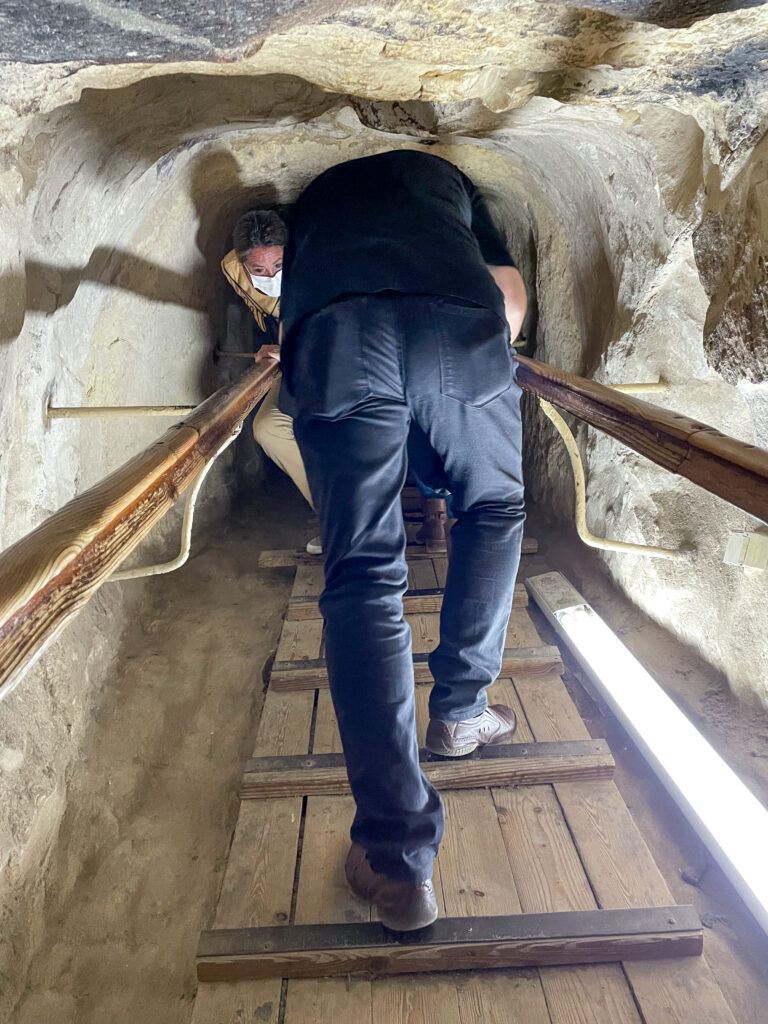
To enter, you go through the robber’s entrance – not the main entrance. This leads to the first climb, which tests your back. The climb is steep with a very low ceiling. Keep in mind, the entrance is the same as the exit, so the entire time you are squeezing past people trying to come down to leave.
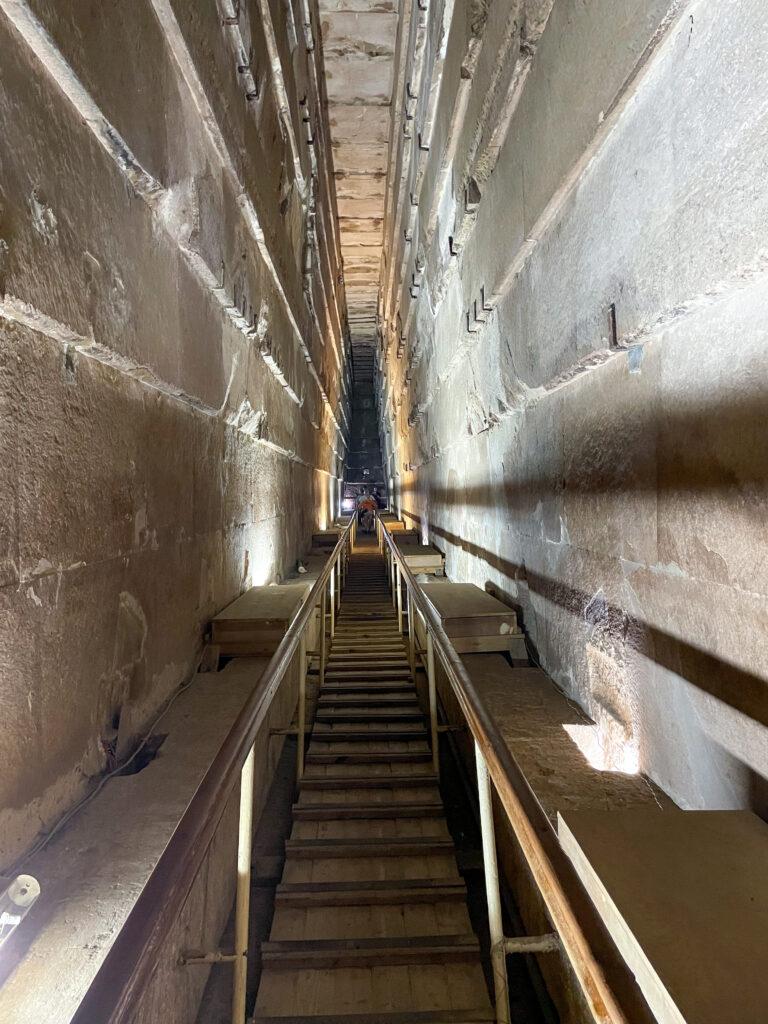
Once you complete the first climb, you reach the Grand Gallery. The ceilings here are vaulted almost 30 feet high – so your back will thank you, but the climb is long and steep. As before, there are people coming down, while you are trying to go up. Also, at this point, the air was getting very hot as you are basically in the world’s largest stone oven!
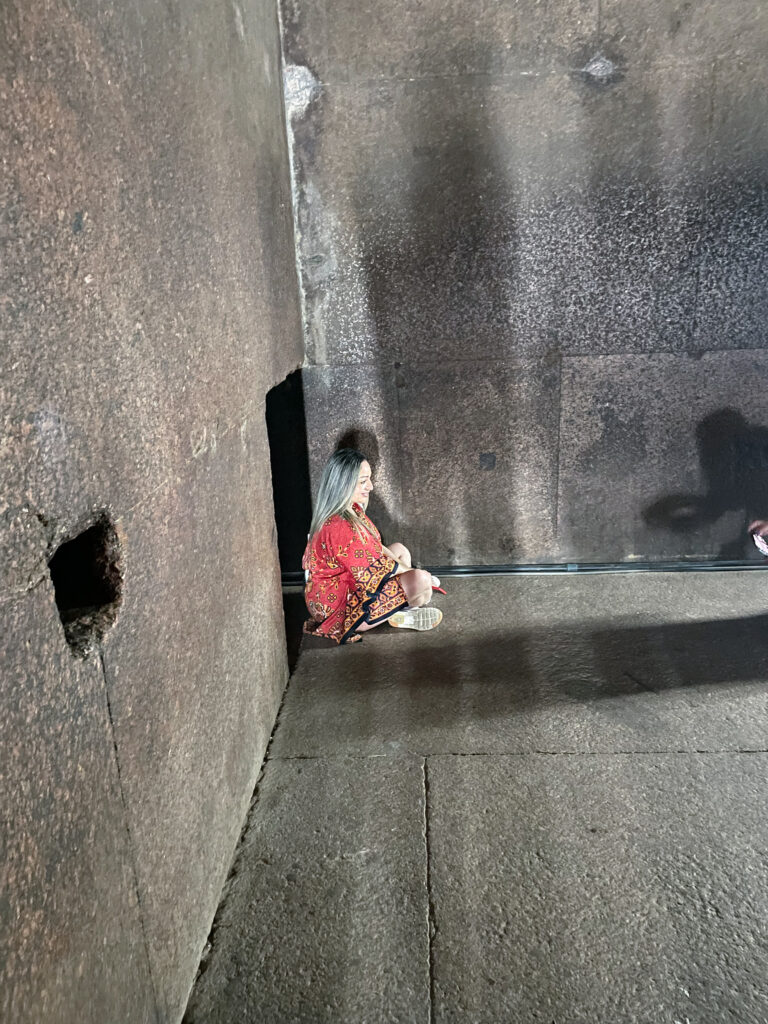
When you finally reach the top, there is a very low entrance into the King’s Chamber. Inside there is not much to see – no inscriptions or carvings – but a large granite room and the remains of the sarcophagus. When you are done, you simply (haha, simply) go back the way you came. I am glad I went into the pyramid, but I don’t see myself doing it again.
Overall, our day trip to see the pyramids of Egypt was exactly as I expected – incredible. It set the stage for our entire trip, where around every corner you see something that completely blows your mind. And, no we didn’t see any aliens. Instead we saw some of the most amazing structures man has ever made, and that is more impressive.

